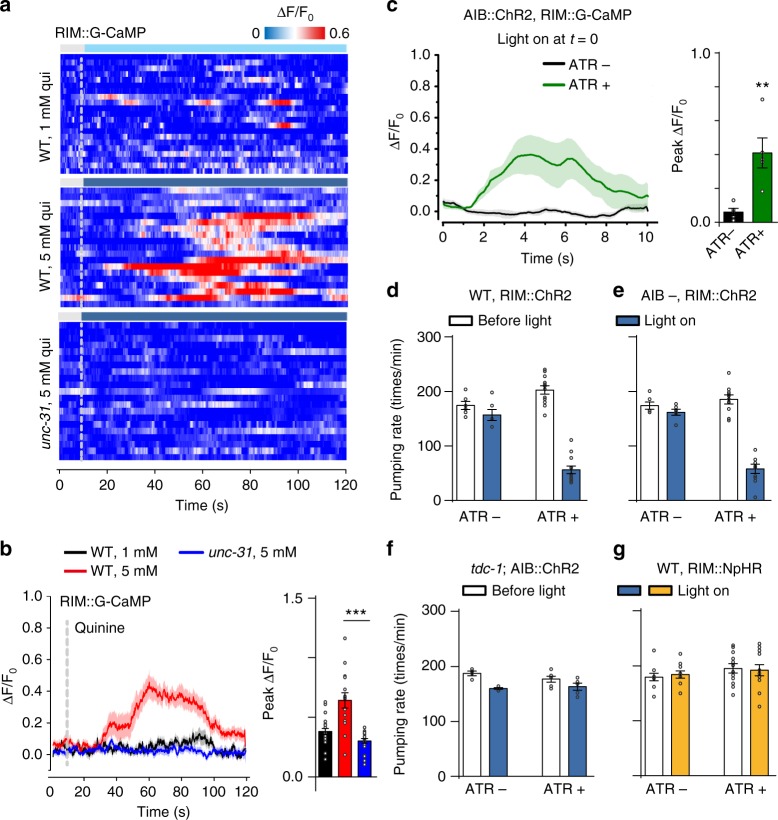Fig. 7.
AIB suppresses feeding by activation of RIM via neuropeptides. a, b RIM calcium dynamics induced by quinine in freely behaving worms acquired by the iCaN system. Traces are synchronized according to the time of quinine application (dash lines). High-concentration quinine promoted the activity of RIM. Absence of unc-31 abolished quinine-induced RIM activities. a Heat maps; b Average traces (left) and peak changes (right) for RIM calcium dynamics. The shades around traces indicate error bars (s.e.m.). n ≥ 15. ***p < 0.001 (t test). c Optogenetic stimulation of AIB promoted the activity of RIM. Worms expressing two transgenes (ChR2 in AIB, and GCaMP in RIM) were tested. The transgenic animals cultured on ATR-free plates were taken as control. Average traces (left) and peak changes (right) for RIM calcium dynamics were shown. The shades around traces indicate error bars (s.e.m.). n ≥ 5. **p < 0.01 (t test). d, e Optogenetic stimulation of RIM inhibited pumping rate in both wild-type and AIB-ablated worms. Worms expressing ChR2 specifically in RIM were tested. The transgenic animals cultured on ATR-free plates were taken as control. Error bars: s.e.m. n ≥ 6. ***p < 0.001 (t test). f tdc-1 is required for RIM mediated pumping inhibition. tdc-1 mutant worms expressing ChR2 specifically in RIM were tested. The transgenic animals cultured on ATR-free plates were taken as control. Error bars: s.e.m. n ≥ 4. N.S. represents no significant difference. g Optogenetic inhibition of RIM produced no effect on pumping. Worms expressing NpHR specifically in RIM were tested. The transgenic animals cultured on ATR-free plates were taken as control. Error bars: s.e.m. n ≥ 10. N.S. represents no significant difference

